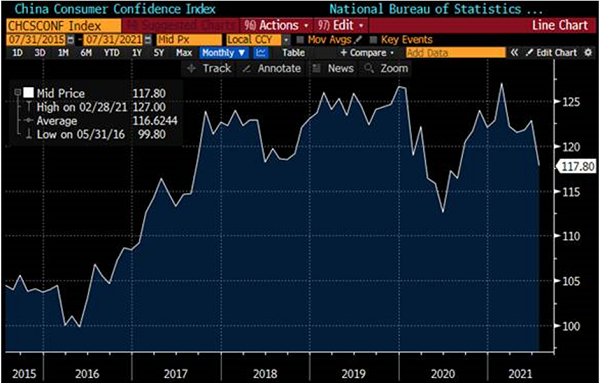Emerging markets – growth cuts coming?
The latest developments in China is the main reason why the emerging markets (EM) growth outlook is front and center this morning. China’s activity indicators for August disappointed, especially retail sales (annual growth slowed much more than expected to mere 2.5%). Industrial production and investments also undershot consensus. One reason, of course, is the Delta outbreak, which resulted in new mobility restrictions. But the main focus today is on regulatory crackdown, including real estate (Evergrande’s struggle to stay afloat is the main driver). The “real estate” logical chain includes a massive increase in household debt after the 2008/09 global financial crisis, and the fact that about 60% of the debt are mortgages (of course, household balance sheets include significant assets, but property accounts for a big part of them as well). One immediate concern is that tighter regulations/Evergrande woes will weigh on consumer confidence – which dropped to the lowest level since June 2020 (see chart below) – slowing post-COVID rebalancing, worsening the growth outlook, and necessitating a “sharper turn” in policy support.
Elsewhere in EM, domestic activity indicators looked mixed. Brazil’s monthly growth proxy was stronger than expected in July, but South Africa’s retail sales dropped by 11.2% month-on-month. The latter was most likely related to the deadly riots, hence transitory, so the near-term growth impact should be contained. If we look at the most recent downward growth revisions in EM, they were mostly concentrated in Asian economies affected by summer lockdowns (Indonesia, Malaysia, Philippines, and Thailand). The 2021 EM growth forecast ex-China actually showed a small rebound in July-August, after several months of decline.
China’s near-term growth outlook (Q3 and Q4) had been cut, but the revisions are still relatively modest – from 6.2% to 5.55% for Q3 (between May and September) and from 5.3% to 4.7% for Q4 (between April and September). The question is whether Evergrande poses systemic risks, which can have a more significant impact on growth. One rating agency, Fitch, thinks the risks can be contained because China’s residential property market is fragmented, and the government has capacity to intervene, albeit with higher thresholds. Stay tuned!
Chart at a glance: China’s consumer confidence – moving closer to COVID lows

Source: Bloomberg LP
Published: 15 September 2021




